10. Gurrelieder (Bridgewater Hall, Manchester)

Mark Elder and the Hallé have established a tradition of mounting large-scale works, operas in concert or oratorios, as season-ending spectaculars. This year their choice was a work with elements of both: Schoenberg’s monumental setting of Jacobsen’s verse, with its vast orchestral and vocal forces. Elder excels in such a theatrical piece, and in the lush post-Wagnerian musical language that it celebrates.
9. O Hototogisu! (BCMG/Knussen, Britten Studio, Snape)
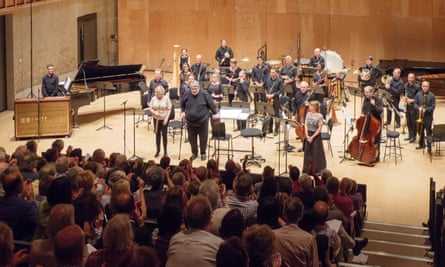
New works by Oliver Knussen are rarities, but almost always worth the wait. Knussen’s settings of Japanese haiku, still a work in progress, was the standout novelty in BCMG’s visit to the Aldeburgh festival. With its soaringly lyrical vocal lines and fluttering flute solos, the cycle is effectively a double concerto for soprano and flute, ravishingly scored and inimitably coloured.
8. Bang on a Can All-Stars (BBC Proms, Royal Albert Hall, London)
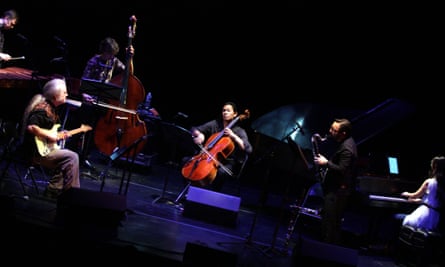
If it was generally a lacklustre year for new works at the BBC Proms, a late-night appearance by Bang on a Can, celebrating its 30th anniversary as one of the most vital forces in US contemporary music, provided the energy and muscle missing elsewhere, with music by the group’s founders, David Lang, Julia Wolfe and Michael Gordon, and ending with a raucous, fierce account of Andriessen’s classic, Worker’s Union.
7. From the House of the Dead (Welsh National Opera at Wales Millennium Centre, Cardiff)
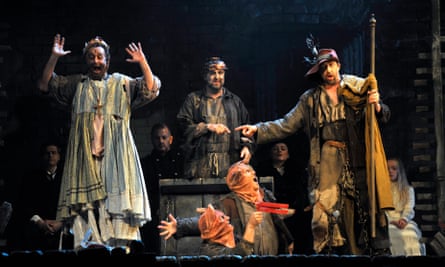
The cycle of Janáček operas launched by Scottish and Welsh National Operas in the mid 1970s, all directed by David Pountney, played a major role in establishing Janáček in the repertory in the UK. The productions have travelled widely, and as this revival of Pountney’s 35-year-old staging of House of the Dead showed, they can still retain their dramatic power, particularly when conducted so intensely by Tomáš Hanus.
6. Australian Chamber Orchestra (Milton Court, London)

Violinist Richard Tognetti was artist-in-residence at Milton Court for 2016-17, and his residency culminated in a weekend-long visit by the astonishing band he has led and directed for over a quarter of a century. For sheer technical brilliance and finesse the ACO has few peers among chamber orchestras today, and works by Shostakovich, Beethoven, Tchaikovsky and Mozart confirmed their position at the very top of the orchestral tree.
5. Pelléas et Mélisande (Scottish Opera, Theatre Royal, Glasgow)
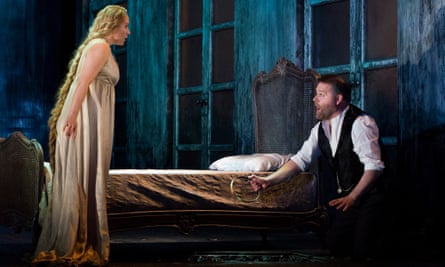
David McVicar seems to reserve some of his finest productions for his returns to his native city, and his beautiful staging of Debussy’s enduringly enigmatic masterpiece was perhaps the pick of the bunch, unerringly evoking the opera’s disconnected, repressed world. It was a musical triumph too, a demonstration of the strides Scottish Opera has made in just two seasons under music director Stuart Stratford.
4. This is Rattle (London Symphony Orchestra, Barbican, London
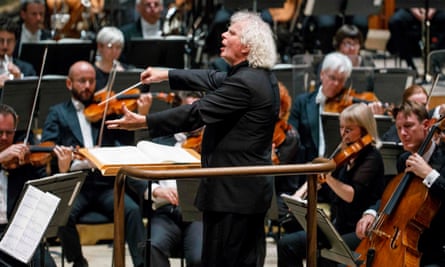
A whole festival took shape around Simon Rattle’s inaugural concerts as the LSO’s music director. British music was its focus, and Rattle’s opening concert was an all-British affair, with works by Grime, Adès, Birtwistle, Knussen and Elgar. But it was the superb quality of the music-making more than the music itself that grabbed the attention, suggesting that the LSO has waited far too long for a conductor who can reveal just how good an orchestra it can be.
3. Khovanshchina (BBC Proms, Royal Albert Hall, London and WNO, Wales Millennium Centre, Cardiff)

Mussorgsky’s dark, dour chronicle of political machinations in 18th-century Russia normally takes second place to his masterpiece Boris Godunov. But this year Khovanshchina was very much in the limelight, first in a magnificent concert performance at the Proms conducted by Semyon Bychkov, and then with WNO’s fiercely vivid revival of its 2007 production, relocating the action to the years after the 1917 revolution.
2. Haitink’s Mahler (London Symphony Orchestra, Barbican, London)

As he nears his 90th birthday, Bernard Haitink’s London concerts become more treasurable than ever. His appearances with the LSO usually feature the composers in which he’s always excelled – Beethoven and Brahms, Bruckner and Mahler – and it was Mahler’s last completed symphony that occupied the whole of this programme, a gloriously direct, unvarnished account of the Ninth, searingly intense and superbly played.
1. Monteverdi Trilogy: L’Orfeo, Il Ritorno d’Ulisse, L’Incoronazione di Poppea (John Eliot Gardiner/Monteverdi Choir/English Baroque Soloists, Colston Hall, Bristol)
Concerts and events to celebrate the 450th anniversary of the birth of Claudio Monteverdi were ubiquitous this year. While performances of the 1610 Vespers have predominated, there have also been plenty of stagings of the operas, too. None, though, have come close to the ambitious project planned and conducted by John Eliot Gardiner, which presented concert productions of all three surviving stage works – L’Orfeo, Il Ritorno d’Ulisse and L’Incoronazione di Poppea – and which came to Bristol near the beginning of their summer-long tour through Europe.

Musically it was an enthralling experience. While his own Monteverdi Choir supplied the chorus, Gardiner had assembled a carefully chosen troupe of young soloists, most of whom took roles in all three operas, so that, for instance, the wonderfully dark-toned bass Gianluca Buratto was the Charon and Pluto in Orfeo, Neptune in Ulisse and Seneca in Poppea, while Hana Blažíková was both a seductive Poppea and a sparky Euridice in Orfeo. The result was a company of singers who had immersed themselves so thoroughly in Monteverdi’s dramatic world that the texts were projected to make every phrase intelligible.
The concert stagings, devised by Gardiner and Elsa Rooke, added just enough theatrical trappings to elucidate the drama in a timeless way, while the casual modern costumes preserved that neutrality. What came through in Monteverdi’s scores was sometimes shatteringly vivid. When these earliest of all music-theatre masterpieces are presented as intelligently and faithfully as this, the subsequent three and a half centuries of operatic history become almost irrelevant. Monteverdi’s genius seems to have understood and exploited every possibility that the newly invented genre offered.
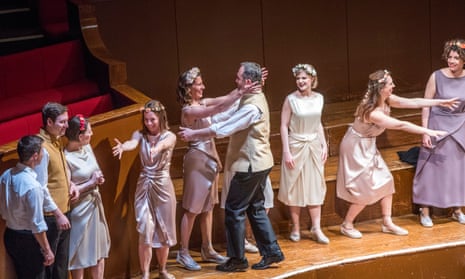
Comments (…)
Sign in or create your Guardian account to join the discussion